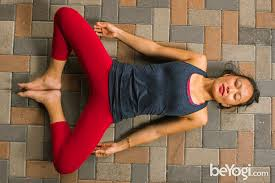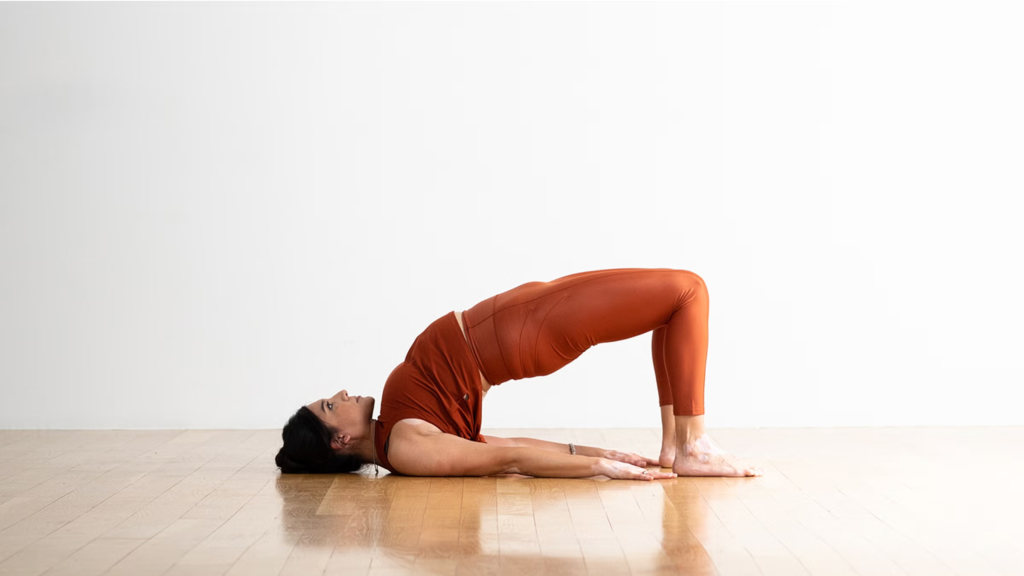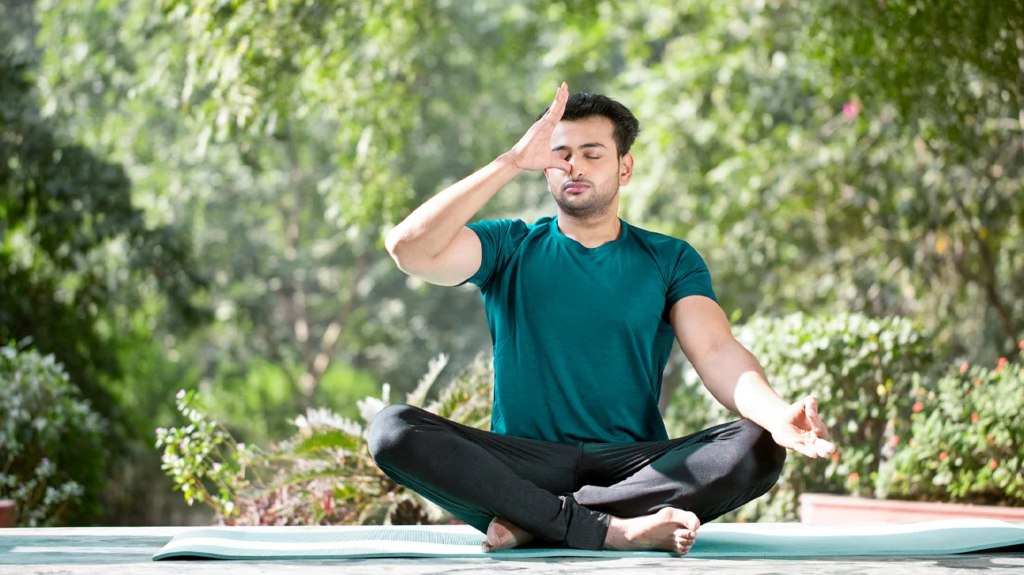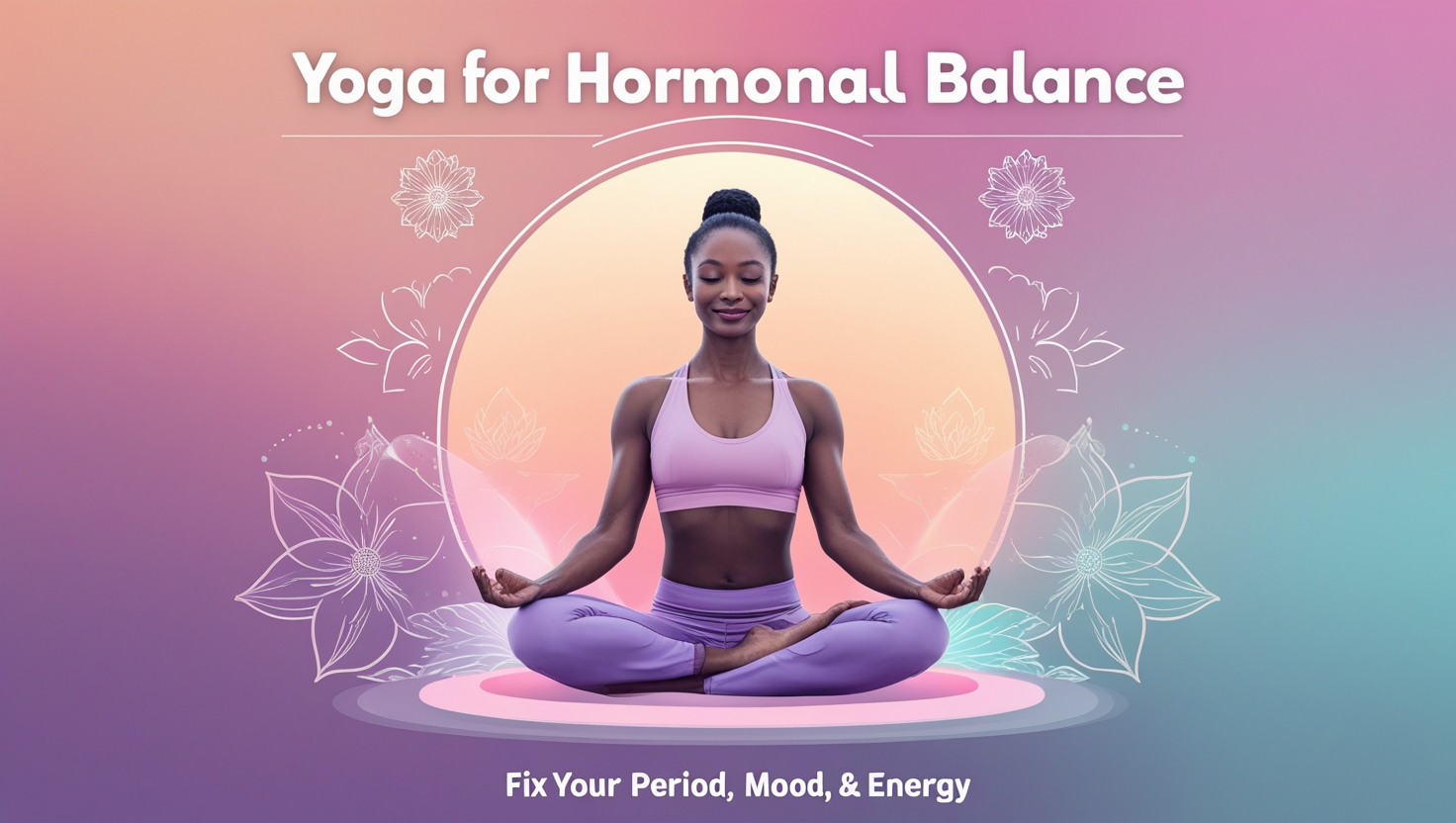Hormones are the body’s chemical messengers, influencing everything from your menstrual cycle and mood to your overall energy levels. When these delicate chemicals fall out of balance, you may experience irregular periods, mood swings, fatigue, and other health issues. Fortunately, yoga—a practice rooted in ancient wisdom—offers natural techniques to restore hormonal balance and promote well-being. In this article, we’ll explore how yoga can help regulate hormones, ease menstrual discomfort, uplift your mood, and boost energy. We’ll break down the science behind these benefits, provide detailed instructions for specific yoga poses and practices, and offer a 30-day plan to integrate these techniques into your daily routine. Additionally, we’ve included FAQs at the end to address common concerns.
Introduction
Modern life brings with it stress, poor sleep, and dietary imbalances that can disrupt our natural hormonal rhythm. Many women experience hormonal challenges in the form of irregular periods, PMS, and mood fluctuations, while both women and men may suffer from low energy and imbalanced stress hormones. Yoga provides a holistic approach by addressing not just the physical body but also the mind and spirit. Through mindful movement, breath control, and meditation, yoga works to rebalance the endocrine system, the network of glands that produce hormones.
This article will help you understand:
- The role hormones play in your body and how imbalances occur.
- How yoga techniques—ranging from specific poses to breathing exercises—can restore balance.
- A detailed, easy-to-follow yoga routine aimed at fixing your period, mood, and energy.
- Practical lifestyle tips to complement your yoga practice.
- Frequently asked questions to guide you on your journey.
Understanding Hormonal Balance
What Are Hormones?
Hormones are chemical messengers produced by glands in the endocrine system. They travel through the bloodstream and affect nearly every cell, tissue, and organ. Key hormones that impact women’s health include:
- Estrogen and Progesterone: Regulate the menstrual cycle and reproductive health.
- Cortisol: Known as the stress hormone, high levels can lead to mood swings and fatigue.
- Thyroid Hormones: Influence energy levels, metabolism, and mood.
- Insulin: Regulates blood sugar levels and energy.
Causes of Hormonal Imbalance
Hormonal imbalances can result from a variety of factors, including:
- Chronic Stress: Prolonged stress increases cortisol levels, which in turn disrupts other hormones.
- Poor Diet: High sugar intake, processed foods, and insufficient nutrients can impair hormone production.
- Lack of Sleep: Inadequate rest affects the body’s ability to regulate hormones effectively.
- Sedentary Lifestyle: Regular physical activity is essential for maintaining a balanced endocrine system.
- Environmental Toxins: Chemicals in plastics, pesticides, and personal care products can act as endocrine disruptors.
When hormones are imbalanced, women may experience irregular or painful periods, mood swings, anxiety, and decreased energy. Men, too, can suffer from issues such as fatigue, mood fluctuations, and decreased vitality. Yoga addresses these imbalances by reducing stress, enhancing circulation, and stimulating the endocrine glands.
How Yoga Can Restore Hormonal Balance
Yoga’s benefits extend far beyond physical fitness. Its holistic approach touches every aspect of well-being, making it particularly effective for balancing hormones. Here’s how:
1. Stress Reduction and Cortisol Regulation
Yoga emphasizes mindful breathing (pranayama) and meditation, which help reduce stress and lower cortisol levels. With a calmer mind, the body is better able to regulate its hormone production. Techniques like alternate nostril breathing balance the nervous system, setting the stage for hormonal harmony.
2. Improved Blood Flow and Lymphatic Circulation
Many yoga poses are designed to stimulate blood circulation and lymphatic flow. Better circulation means more efficient transport of hormones throughout the body and improved detoxification, both of which are crucial for maintaining endocrine health.
3. Stimulation of Endocrine Glands
Certain yoga postures provide a gentle massage to the endocrine glands—such as the thyroid, adrenals, and ovaries—encouraging optimal hormone production. Twisting poses and forward bends, for instance, help stimulate these glands and improve their function.
4. Enhanced Mind-Body Connection
Yoga fosters a deep connection between the mind and body. This awareness helps you recognize stress triggers, make healthier lifestyle choices, and create a balanced environment that supports hormonal regulation. As you tune in to your body, you become more attuned to its needs, whether it’s rest, nourishment, or movement.
Yoga Practices for Hormonal Balance
A well-rounded yoga practice for hormonal balance involves a combination of asanas (poses), pranayama (breathing techniques), mudras (hand gestures), and meditation. Below are several practices known for their hormone-regulating effects.
A. Asanas (Yoga Poses)
Incorporating specific yoga poses can help stimulate the endocrine glands and relieve common symptoms of hormonal imbalance. Here are some key poses:
1. Supta Baddha Konasana (Reclining Bound Angle Pose)

Benefits:
- Opens the hips and stimulates the pelvic region.
- Relieves menstrual cramps and improves blood circulation.
Instructions:
- Lie on your back and bring the soles of your feet together, letting your knees fall open.
- Place your arms at your sides or rest them on your belly.
- Breathe deeply and hold for 2–5 minutes.
Tips:
- Use cushions under your knees if the stretch feels too intense.
2. Setu Bandha Sarvangasana (Bridge Pose)

Benefits:
- Opens the chest and stimulates the thyroid and parathyroid glands.
- Improves circulation and helps reduce stress.
Instructions:
- Lie on your back with knees bent and feet flat on the floor, hip-width apart.
- Press into your feet as you lift your hips upward.
- Clasp your hands under your back and hold for 1–2 minutes.
Tips:
- Keep your neck relaxed and breathe steadily.
3. Balasana (Child’s Pose)

Benefits:
- Provides deep relaxation and relieves stress.
- Calms the mind, which is essential for balancing cortisol.
Instructions:
- Kneel on the floor, sit back on your heels, and lean forward with your arms extended.
- Rest your forehead on the mat and breathe deeply for 2–3 minutes.
Tips:
- Use a bolster or pillow under your chest for extra comfort.
4. Bhujangasana (Cobra Pose)

Benefits:
- Strengthens the back and opens the chest.
- Stimulates the abdominal organs and improves digestion, which indirectly supports hormone regulation.
Instructions:
- Lie face down with your hands under your shoulders.
- Inhale and lift your head and chest, using your back muscles.
- Hold for 15–30 seconds and then slowly lower down.
Tips:
- Avoid overstraining—focus on gentle movement rather than force.
5. Ardha Matsyendrasana (Half Spinal Twist Pose)

Benefits:
- Massages the abdominal organs and stimulates the reproductive system.
- Enhances blood flow and detoxification.
Instructions:
- Sit with your legs extended; bend your right knee and place your foot on the outside of your left thigh.
- Twist to the right and use your left elbow against your right knee for leverage.
- Hold for 30 seconds and repeat on the other side.
Tips:
- Keep your spine long and twist from the waist.
B. Pranayama (Breathing Techniques)
Breathwork is a cornerstone of yoga that helps calm the nervous system and lower stress hormones.
1. Anulom Vilom (Alternate Nostril Breathing)

Benefits:
- Balances the nervous system and reduces stress.
- Enhances oxygen intake and promotes mental clarity.
Instructions:
- Sit comfortably with your spine straight.
- Close your right nostril with your thumb, inhale slowly through the left nostril.
- Close the left nostril with your ring finger, and exhale through the right.
- Continue alternating for 5–10 minutes.
Tips:
- Keep your breath smooth and steady.
2. Bhramari (Bee Breath)

Benefits:
- Calms the mind and reduces anxiety.
- Improves focus and helps regulate mood.
Instructions:
- Sit in a comfortable position and close your eyes.
- Inhale deeply, then exhale while making a soft humming sound.
- Continue for 3–5 minutes, feeling the vibrations throughout your body.
Tips:
- Use your thumbs to gently close your ears if it helps focus your attention.
C. Mudras (Hand Gestures)
Mudras can be used alongside asanas and pranayama to channel energy and promote balance.
1. Apana Mudra

Benefits:
- Helps regulate the reproductive system.
- Enhances detoxification and supports overall hormonal balance.
Instructions:
- Touch the tip of your thumb, middle finger, and ring finger together while extending the index finger and little finger.
- Hold this mudra for 5–10 minutes while breathing deeply.
Tips:
- Practice while seated comfortably or during meditation.
2. Prana Mudra

Benefits:
- Activates the life force (prana) and enhances energy.
- Supports vitality and overall well-being.
Instructions:
- Touch the tips of your thumb, ring finger, and little finger together, keeping the index and middle fingers extended.
- Hold for 5–10 minutes daily.
Tips:
- Combine with deep breathing for enhanced benefits.
D. Meditation and Mindfulness
A regular meditation practice can lower stress, balance hormones, and improve mood.
Simple Meditation Technique:
- Mindfulness Meditation:
Sit comfortably, close your eyes, and focus on your breath. Notice your thoughts without judgment. Start with 5–10 minutes daily and gradually increase the duration. - Loving-Kindness Meditation:
Repeat positive affirmations such as “May I be balanced, may I be healthy, may I be at peace.” This practice nurtures self-compassion and emotional balance.
A 30-Day Plan for Hormonal Balance
Building a routine is key to reaping long-term benefits. Here’s a sample 30-day plan to help you integrate these practices:
Week 1: Establishing the Routine
- Morning:
- 5 minutes of alternate nostril breathing (Anulom Vilom)
- 10 minutes of gentle asanas (Supta Baddha Konasana, Child’s Pose)
- Evening:
- 5 minutes of mindfulness meditation
- 5 minutes of Apana Mudra practice
Week 2: Deepening the Practice
- Morning:
- 5 minutes of Anulom Vilom followed by 5 minutes of Bhramari
- 15 minutes of asanas (add Cobra Pose and Bridge Pose)
- Evening:
- 10 minutes of mindfulness or loving-kindness meditation
- 5 minutes of Prana Mudra practice
Week 3: Integrating and Expanding
- Morning:
- 5 minutes of combined pranayama (alternate nostril and Bhramari)
- 20 minutes of a flow that includes twists (Ardha Matsyendrasana), forward bends, and gentle backbends
- Evening:
- 10 minutes of meditation
- 5 minutes of gentle stretching or restorative poses
Week 4: Refinement and Consistency
- Morning:
- 10 minutes of pranayama (mixing both techniques)
- 20 minutes of a personalized sequence including poses for opening the chest, stretching the hips, and stimulating the endocrine glands
- Evening:
- 10 minutes of meditation
- 5 minutes each of Apana and Prana Mudra practice
Remember: Journal your experiences, noting changes in your menstrual cycle, mood, and energy levels. Adjust the plan as needed to suit your body’s feedback.
Lifestyle Tips to Support Hormonal Balance
Yoga works best when paired with healthy lifestyle habits. Consider these additional tips:
1. Nutrition
- Eat Whole Foods:
Focus on a balanced diet rich in fruits, vegetables, lean proteins, and healthy fats. - Limit Processed Foods:
Avoid excessive sugar, caffeine, and processed snacks that can exacerbate hormonal imbalances. - Include Phytoestrogens:
Foods like flaxseeds, soy, and legumes may help balance estrogen levels.
2. Sleep
- Prioritize Rest:
Aim for 7–9 hours of quality sleep per night. - Establish a Bedtime Routine:
Wind down with calming activities—avoid screens before bed.
3. Stress Management
- Practice Regular Meditation:
Incorporate mindfulness to lower cortisol levels. - Engage in Gentle Exercise:
Besides yoga, consider walking, cycling, or swimming. - Stay Hydrated:
Drink plenty of water to help detoxify and support overall health.
4. Environmental Factors
- Reduce Toxin Exposure:
Use natural personal care products and avoid plastics when possible. - Connect with Nature:
Spending time outdoors can improve mood and reduce stress.
Real-Life Success Stories
Many have experienced transformative results by embracing yoga for hormonal balance. Consider the story of Priya, a woman in her early 30s who struggled with irregular periods and mood swings. After adopting a consistent yoga routine incorporating deep breathing, restorative poses, and meditation, she noticed a gradual normalization of her cycle and a significant improvement in her overall mood and energy. Similarly, Anita, who faced fatigue and low energy, found that practicing a combination of gentle twists, forward bends, and mindful breathing not only stabilized her hormones but also boosted her vitality and mental clarity.
These experiences underscore how integrating yoga into your daily life can yield profound improvements in hormonal balance, enhancing both physical health and emotional well-being.
Frequently Asked Questions (FAQs)
Q1: How long does it take to see hormonal improvements with yoga?
A: While individual results vary, many report feeling more balanced and experiencing fewer menstrual irregularities within a few weeks. Consistent practice over 30 days or more typically leads to more noticeable changes.
Q2: Can yoga completely fix hormonal imbalances?
A: Yoga can be a powerful tool for managing and reducing the symptoms of hormonal imbalances by lowering stress and supporting the endocrine system. However, it works best in conjunction with proper nutrition, sleep, and medical guidance if necessary.
Q3: Are there any risks associated with these yoga practices?
A: For most people, these yoga practices are safe. However, if you have severe health conditions, chronic pain, or are pregnant, consult your healthcare provider or a qualified yoga instructor before starting a new routine.
Q4: Can I modify the poses if I’m a beginner?
A: Absolutely. Yoga is highly adaptable. Use props like blocks, bolsters, or cushions, and take your time to learn proper alignment. The key is to listen to your body and progress at your own pace.
Q5: What time of day is best for practicing yoga for hormonal balance?
A: Many practitioners find morning sessions beneficial to set a balanced tone for the day, while an evening practice can help unwind and reduce stress. Choose a time that fits your schedule and be consistent.
Q6: Do I need any special equipment?
A: All you need is a comfortable yoga mat. Props such as blocks, straps, or cushions can be helpful but are not essential.
Q7: How can I track my progress?
A: Keeping a journal can be very useful. Note changes in your menstrual cycle, mood, energy levels, and overall well-being to help tailor your practice over time.
Conclusion
Yoga offers a gentle, natural, and effective way to restore hormonal balance, addressing issues like irregular periods, mood swings, and low energy. By integrating specific asanas, pranayama, mudras, and meditation into your daily routine, you can stimulate your endocrine system, reduce stress, and promote overall well-being. This holistic approach not only helps fix your period and uplift your mood but also empowers you to regain control over your energy and health.
Remember, consistency is key. Even a 15- to 30-minute daily practice can create significant shifts over time. Alongside yoga, healthy nutrition, sufficient sleep, and stress management further support the delicate balance of hormones. Embrace the journey with patience and self-compassion, and allow the transformative power of yoga to guide you toward a more balanced, vibrant life.
May each mindful breath, every gentle stretch, and the calm of meditation serve as a reminder that true wellness comes from harmonizing the body, mind, and spirit. With dedication, you can overcome hormonal imbalances naturally—fix your period, boost your mood, and reclaim your energy.













Add comment